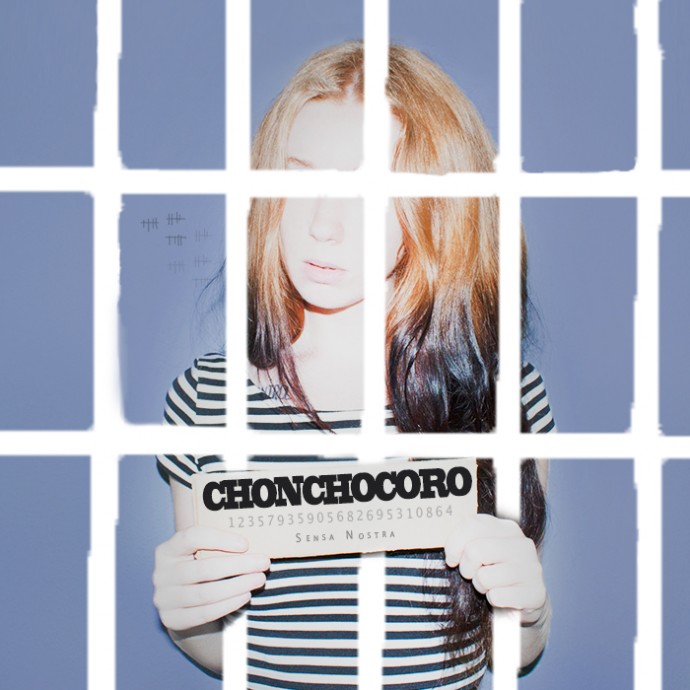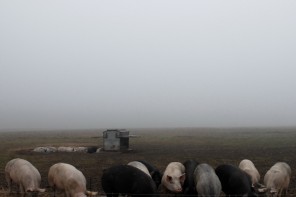When your sense of morality is largely dependent on your surroundings, when your idea of justice is relative to your environment, how do you decide who is “good” and who is “bad” when they’ve all already been condemned by society? Lucas reveals remarkable experience when visiting Chonchocoro, Bolivia’s Highest Security Prison.
This is where all the murderers and bank robbers go – although the three English girls (who I was accompanying) and I didn’t know how hardcore a tour this was going to be until we arrived. We took a 1-hour taxi ride past the beautiful countryside to get to the facility. It slowly emerged that our guide Joost was a bit dim-witted and inefficient, but still reliable, kind and well meaning. He had been in San Pedro Prison for 4 years for trying to smuggle 1.3Kg of cocaine out of the country in his belly… it must have had other effects on him.
After we were searched, and Joost bribed the prison guards with some Coca-Cola, we stepped into the “guard area,” where no prisoners are allowed. Ramón, “the boss of the prison” and a person of trust according to Joost, greeted us. We followed them into the “inmate area” and were left completely alone with a drug dealer and Ramón, who, as it turned out, was not the boss of the prison, but the alpha-male at the top of the prisoner hierarchy, as well as a multiple murderer, drug lord, bank robber and general Godfather type.
During lunch, we had the opportunity to get to know more of the inmates: Fernando, a corrupt police colonel, who took care of the prison’s legal matters and as such was venerably referred to as “El Abogado” (the lawyer); Rodrigo Cajas, who at his peak got through 20 grams of cocaine per day and bragged in great detail about his success in killing his fellow thugs who had it out for his life. After each of his victories he would give out a chilling but hearty gaggle, sending spit flying across the air and a chill down our spines – I tried to keep cool.
And of course Ramón – he became my favourite of the lot, as he spoke softly, was well educated, extremely intelligent and could tell you a lot about his experiences both in and outside of prison. We felt completely safe with him, because he just had this presence that assured every one of us that no one would dare mess with him (or us) if they valued their lives.
An entirely self-made man, he became one of Bolivia’s leading drug lords at the age of 21. Now 30 and incarcerated, he still has his own cocaine factory in Santa Cruz to the east, exporting to Israel and Australia, and was apparently in complete control of former prisoner Vice-President of Bolivia Álvaro Garcia Linera. He was only a phone-call away from having anyone in La Paz taken care of – in fact, when we arrived he had actually just been on the phone to someone to confirmed that this drug dealer called “New Orleans” had been taken care of. Still, his immense charm and presence made one forget these “minor” personality faults.
As we consumed our meals, bored of Cajas’ theatrical story of how he once was stabbed in the lower belly with a rusty 4-inch blade, I noticed that only one of the cells in this corridor was locked and that occasionally an arm would appear from the little window, and would start spasmodically waving around. After inquiring about it, I was told it was the cell of Carlos, the maniac. When he was 16, Carlos apparently had stuck a butterfly knife into the back of his unfaithful boyfriend’s neck until it came out by his jaw. According to them, he had the mind of a 7-year old now and is locked up 23 hours a day. Trying to somehow prove Carlos’ madness, Cajas went to his own cell, emerging from it with a baseball bat with which he whacked poor Carlos’ hand. To compensate, he then gave him some weed – “This shuts him up,” he informed us.
We later went to see Carlos through the cell bars, whereupon he just stared at us with beastly eyes. The girls and I didn’t dare complain or contradict the inmates on what they were doing, as we didn’t want to find out what they were really like when they got annoyed, so we just nodded and walked on as quickly as possible.
We later walked around, looking at the prison’s gym, guinea-pig house, carpentry, fish-tank, football pitch (currently under construction), church and classroom, all of which were built upon Ramón’s request to occupy the prisoners’ time.
We were also shown the warehouse. This is supposedly the only place the guards cannot see into from their surrounding towers, so whenever two prisoners have an argument, this is where it’s settled: only one comes out alive. “The people here are much kinder than in San Pedro”, said Joost. “In San Pedro they would just stab you from behind or some bullshit like that. At least here it’s clean and honourable, man!”
This is apparently also where this one prisoner was dangled from the ceiling by handcuffs for 24 hours – he was being punished by the guards for having raped a young girl who had been visiting her father in the prison. When he was let down, the inmates had just been having lunch. Ten minutes later he was dead, and many forks were missing from the canteen. “It shows the disgust prisoners have for paedophiles and rapists”, said Ramón.
From there we went to Ramón’s cell, which was equipped with a comfy bed, nice TV, huge speakers and a sofa. Cajas, Ramón’s “bitch,” locked the door. The girls still bore their smile, but I could see they were less-than-comfortable to be in this cell with two other prisoners. However, I still tried to keep my calm.. As we conversed, I started to like these guys on a personal level. Then the topic moved to cocaine. Ramón explained in detail how he managed to avoid being caught while importing the goods. Meanwhile, Cajas got out some of his own stash and offered us a bit – although it was apparently 95% pure and of excellent quality, I refused the neatly constructed lines on the small mirror. And with everyone but me in the cell on an apparent high, we finalized our visit to the prison.
The full effect of what I had witnessed that day only fully caught up with me when I was back at the hostel, staring blankly at the wall thinking about this poor guy Carlos, who should be in some sort of hospital and instead is locked up, beaten or drugged like an animal. It occurred to me that throughout the whole visit, apart from trying (and succeeding!) to keep my cool, I had had a completely different sense of morality and justice, preferring to be strong and cold instead of compassionate, and it showed me just how surreal and utterly different the rules of conduct have to be if you want to survive in a place like that.







